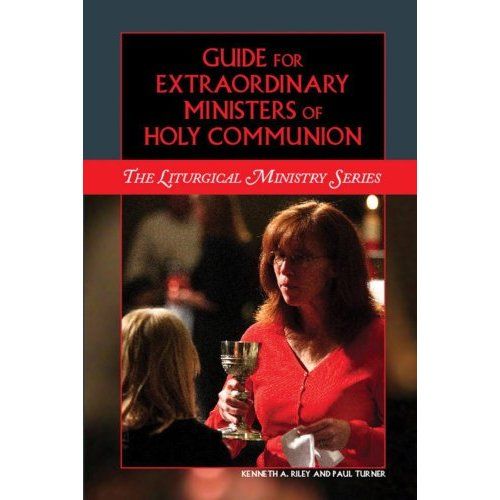B16: We the people
 John Allen of the National Catholic Reporter provided a GetReligion-style service by performing, as he said, "rumor control," in the hope that inaccurate or overblown material can be put in its proper context before it spins out of control. One of the rumors he hoped to control was this one:
John Allen of the National Catholic Reporter provided a GetReligion-style service by performing, as he said, "rumor control," in the hope that inaccurate or overblown material can be put in its proper context before it spins out of control. One of the rumors he hoped to control was this one:
2. The Pope is "correcting" the American Catholic church by not using lay Eucharistic ministers during his public Masses.
As he explains, lay men and women have been used to distribute the Eucharist since the Second Vatican Council. Some took the news that lay ministers would not be used as a signal that the pope was criticizing American Catholicism for inadequate distinction between lay people and ordained priests. But ...
In fact, this is nothing unique to the pope's trip to the United States. As a rule of thumb, lay ministers are almost never employed to distribute the Eucharist during papal Masses, either in Rome or on the road.
The official rule governing the use of lay Eucharistic ministers specifies that they are to be used only in "extraordinary" situations, meaning when a sufficient number of priests and deacons is not available to comfortably distribute Communion to everyone present. The fact that "extraordinary" ministers have become de facto "ordinary" in many parts of the world, from the Vatican’s point of view, says more about the realities of priest shortages than about any change in church teaching.
Allen wryly notes that the one place on earth where you can guarantee no shortage of priests is wherever the pope happens to be saying Mass.
So with all that in mind, let's look at the story by the Associated Press' Eric Gorski:
For 46,000 Catholics, it was a Mass like no other, with the altar standing on centerfield at a ballpark and the presiding clergyman arriving in a bulletproof vehicle.
But Pope Benedict XVI's Mass in the nation's capital Thursday was also different from a typical service in another way: Lay people were not asked to distribute Communion, which was administered exclusively by 300 priests and deacons.
Organizers of the Mass at Nationals Park were only following the letter of church law. But to some Roman Catholics, the ceremony was symbolic of what they see as Benedict's desire to erect clear boundaries between clergy and lay people.
To his credit, Gorski does explain the difference between ordinary and extroardinary ministers. He speaks with Catholic author David Gibson who explains that different people have different vocations. But he plays up the "undemocratic" angle.
Patty Olszewski, 51, of Potomoc, Md., was disappointed about the lack of lay Eucharistic ministers - she is one.
She describes herself as an anti-abortion Catholic who wishes the church would at least consider women priests and disagrees with church teaching against homosexuality. Even so, she said she's happy with her role and feels like she's contributing.
"In everyday life, you don't feel oppressed by any sort of hierarchy because it's so heavily populated by the laity," Olswewski said. "That's 'We the People.' The church is all of us."
Which scripture has that phrase "we the people"? Anyway, all kidding aside, Gorski handles the issue well. He follows up Olswewski's quote with others that present differing viewpoints. But it is funny that Allen predicted this angle so well.